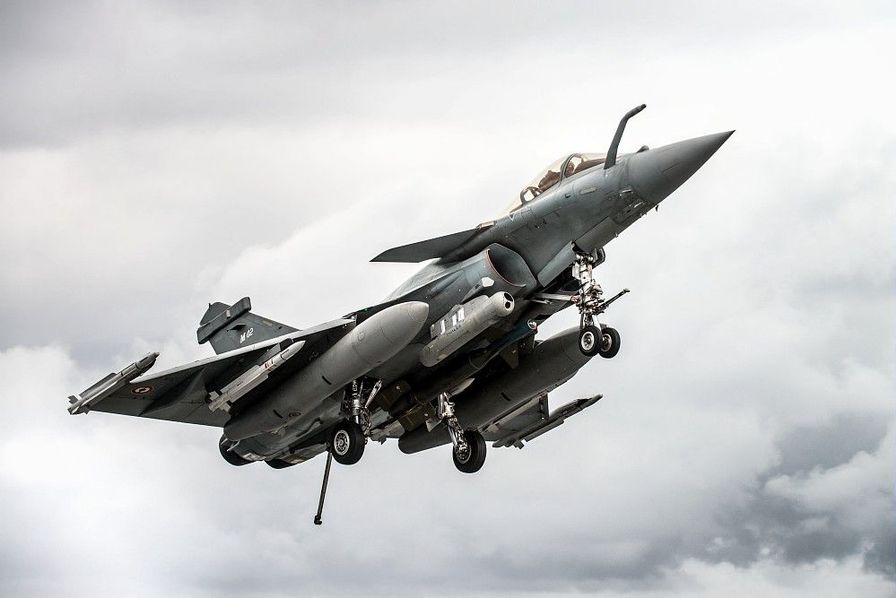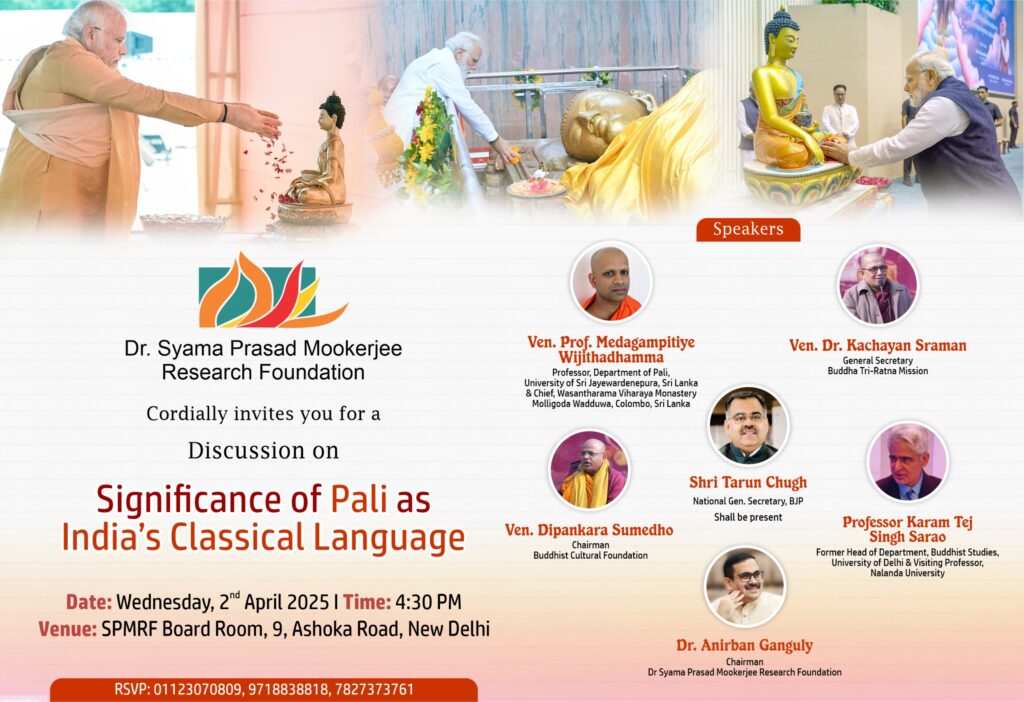Claude Arpi
L’Affaire Rafale is quite simple: the term of the members of the XVIth Lok Sabha will come to an end in a few months and India will go to the ballots to reelect a Lower House and a new government.
Today, if you ask anyone knowledgeable in defence issues what is wrong with the Rafale, they will say: “Nothing is wrong with the plane or the deal; but the elections’ season has started and in today’s politics, everything is permitted, even untruth.”
The Rafale fighter plane has unfortunately been caught in India’s electoral process, but there is another issue involved. The dirty debate reflects two visions of India’s future: should the nation only depend on often-obsolete public enterprises, which work on the Soviet model, to equip its armed forces or should India select a mixed model, with a strong private sector, to achieve the ‘Make in India’ targets.
The Rafale debate turns around this crucial question for the country.
To understand the issue, it is necessary to go back a few years.
The Indian defence procurement designed by the UPA Government was so complicated (not to say confusing) that Manohar Parrikar, who served as Defence Minister under the Modi government, once admitted that he was unable to grasp many of its subtleties; this led to a serious consequence for the Indian Air Force (IAF): fast-depleting squadrons were not replaced, creating a grave danger for a nation which faces two fronts (Pakistan and China).
Unfortunately today many politicians do not care for the country.
Just take a look at the history of the ‘deal’.
While the initial Request for Information for 126 Medium Multi-Role Combat Aircraft (MMRCA) was issued in 2001, the Request for Proposal asking interested parties to come forward, was only publicised in 2007; then the ‘complications’ started. To cut short a long story, it is only in January 2012, after a competitive process which lasted five years more, in which the American F/A-18 and F-16, Russian MiG 35, European Eurofighter and Swedish Saab Gripen participated, Dassault (and its partners Thales and Safran) were selected to supply 126 planes to the IAF. It had taken eleven years to arrive at a decision. But the story was still not over.
Incidentally, India is certainly the only country in the world with such a cumbersome system for defence procurement (it took only three months for Egypt to buy 24 Rafales in 2015).
Of the 126, 18 planes were to be manufactured by Dassault in France, while the remaining 108 planes were to be built in India by Hindustan Aeronautical Ltd (HAL), under a Transfer of Technology (ToT) agreement.
During the last few months, we constantly hear that the government is a ‘chor’, citing ‘obligatory’ offset clauses. But this was not invented by the Modi Sarkar, it was the UPA which added it in the procurement policy and it was a good thing, as it forced the supplier to reinvest a percentage of the ‘deal’ in India.
UPA politicians have forgotten that this clause existed for the MMRCA package too.
In February 2013, during the bi-annual Aeroshow at Yelahanka in Bangalore, news had circulated that Dassault had signed a partnership agreement with Reliance Industries to help build 108 Rafales in India.
But AK Antony, the then Defence Minister, was categorical, that he did not want to hear about a private player in the defence sector. Observers felt that the RM still lived in the Soviet era, where the defence industry must be owned by the State. If Boeing, Dassault, Lockheed-Martin, Saab, Thales or Rafael of Israel, are able to serve their respective countries well, why can’t the Tatas or Reliances and others do so in India?
The point to be noted is that the association between Reliance and Dassault predates the arrival of Modi at the Centre (though at that time, the collaboration was with Mukesh Ambani and not Anil as today).
For several reasons, the MMRCA format was not workable and the Congress knew it: disagreements had cropped up between Dassault and HAL; the transfer of technology was far too ambitious and Dassault was not ready to take ‘full responsibility’ for the 108 fighters to be manufactured in India by HAL.
The negotiations had reached an impasse when in a stroke Prime Minister Narendra Modi unlocked the situation. On April 9, 2015, India announced that it was ready to negotiate the purchase of 36 planes ‘off-the-shelf’. It was a pragmatic move. While dropping the MMRCA framework, Delhi was going for a stop-gap agreement, taking primarily into consideration the IAF’s ‘critical operational necessity’.
Then it took more than a year to arrive at a government to government agreement. In September 2016, an accord was inked; it included the plane’s armament, maintenance, training, etc.
Let us come back for a moment to the MMRCA deal.
A few years ago, a former HAL chairman explained to me one of the many difficulties: “HAL is a vertically integrated company. Practically every item is made in-house, ranging from accessories, avionics, and engines to aircraft. It is a management nightmare. No company in the world attempts such vertical integration. About 60, 70 per cent of a Boeing aircraft is made by subcontractors. When I tried to get engine fuel pump components for the Jaguar made by MICO, Bengaluru (a Bosch subsidiary), it was a non-starter because we needed manufacturing tolerance of five microns and MICO had experience of working with 25 microns.”
The retired Chairman added. “All of us [at HAL] are interested in indigenization, but there are difficulties to achieve it in high technology items.” To build 108 Rafales in Bangolore would have been a nightmare, a long and painful one.
Modi realised this and took the wise decision, though it was a temporary setback for his favourite ‘Make in India’ scheme.
Marshall BK Pandey, one of the best Indian aviation experts explained: “Dassault lacked confidence in the capability of HAL in respect of Quality Standards, Time Lines and Cost, the OEM [Original Equipment Manufacturer, i.e. Dassault] was not prepared to partner with HAL and risk their reputation.”
Every day, the Congress keeps tweeting ‘chhor, chhor’, without proper understanding of the situation and without a proof to corroborate its accusations. It raises a serious question: can an issue of supreme national importance be discussed on the public stage?
But with the elections approaching, ‘national interests’ are shelved. Unfortunately, the present ‘debate’ may jeopardize future defence procurements. In April, the Defence Ministry issued a Request for Information (RFI) for the purchase of 114 new jets. Under the proposed scheme, 18 jets will come in ‘a flyaway condition’ (like the 36 Rafales), the rest will be produced in India under the new ‘strategic partnership’ policy, i.e. a joint venture between the selected foreign aviation major and its Indian partners. It is feared that the present noise around the 36 planes from France could be a precedent to question each and every defence acquisition …and go to the Court.
In the process, it is also forgotten that France has been one India’s most reliable partners, supporting India when everyone else condemned her (for example at the time of the Pokhran tests).
Ultimately it is India’s defence preparedness and the IAF which suffers …and will continue to suffer. Sometimes it makes me doubt if democracy is a good system; the great grand-father of the present INC president would be horrified to see what democracy has become.
And who is laughing at the end? China and Pakistan.
(The writer is a defence and strategy expert)
(The views expressed are the author's own and do not necessarily reflect the position of the organisation)


